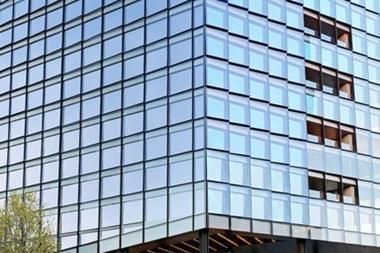Covid-19 has been, and continues to be, a catalyst for change. At some point, life will settle into a new rhythm, which will come with its own challenges. As we grapple with hybrid ways of working, the pandemic has shown that our experiences have not been equal and has emphasised the increased importance of wellbeing.

While HR and IT professionals lead the way in discussions about the future of work, none of us know what the medium- to long-term future of work will look like. Facilities managers (FMs), meanwhile, face the challenge of delivering workspaces to meet new requirements.
Surveys reveal an increasing demand for flexible working, with part of the working week either spent at home or elsewhere outside the central office environment. Many businesses are keen to attract employees into the office and the quality of that office affects how much time they want to spend there.
The purpose of the office must be redefined and that purpose may differ based on an individual’s home working environment. Notwithstanding in-depth analysis, will our views on this remain constant as the threat from the pandemic recedes?
This pandemic has been brutal and is not yet over. Many, including the WHO, expect that it will not be the last. Safety in the office environment – and on the commute – will remain a concern for the returning workforce for some time. While early Covid measures may fall away, facilities managers and designers need to consider the role that good design plays in helping to manage sickness and limit the spread of infection.
Greener office spaces
Sustainability remains a priority for employees. With concerns over lower demand for office space, landlords may have a greater incentive to retrofit energy-saving measures into existing buildings, as well as to create new net zero commercial buildings. Fit-outs will increasingly focus on meeting ESG commitments. Might employee demand lead to a greater take-up of green leases and encourage landlords and multiple tenants to work together so as to encourage people into their offices? Are obligations to co-operate and share information enough, or do we need to go further?

As we move to a hybrid model, our need for connectivity increases. To avoid presenteeism and assist engagement, those working from outside the office need to feel part of the team. As we work more flexibly, our need for those water-cooler moments and face-to-face engagement means we need to know where people will be and when.
Wellbeing has never been higher on the agenda, though it remains to be seen the extent to which the experiential office environment – with spas, gyms and the like – will spread beyond grade-A space. Some workplace consultants talk of a hotel-style experience, with concierges, to help us get the most out of our office space. At a basic level, natural light and fresh air have new importance.
A unifying thread is the increasing importance of data. We need to track how people are using the office so that they are productive and the office can be managed in a sustainable way; and so that in the event of sickness, we can quarantine and deep-clean specific areas quickly. This could see a rise in the development and use of ‘digital twins’ as tools for the management, use and maintenance of property. To facilitate this, data privacy issues need to be addressed.
Facilities managers are faced with implementing changes to real estate to meet ever-changing requirements. FMs, together with HR and IT colleagues, have a vital role in identifying, implementing and monitoring our future working methods to ensure the office continues to foster collegiality and a sense of unity.
Clare Reddy is a partner at Lewis Silkin





























No comments yet